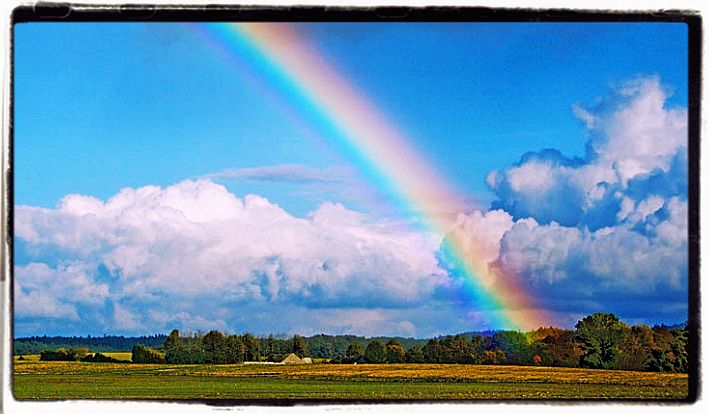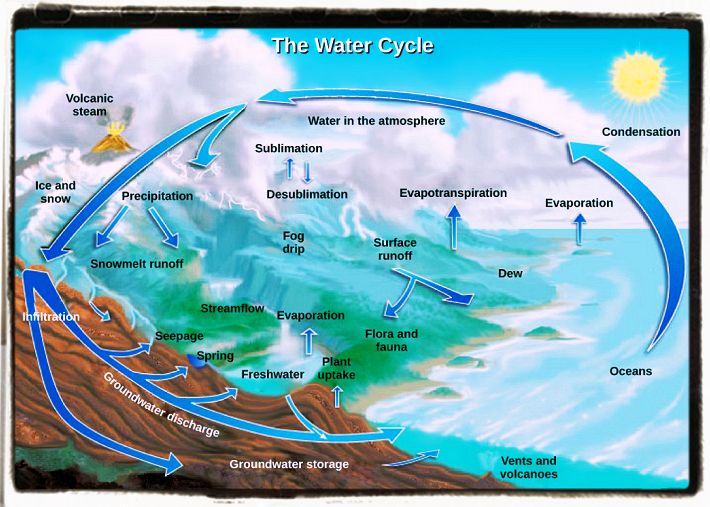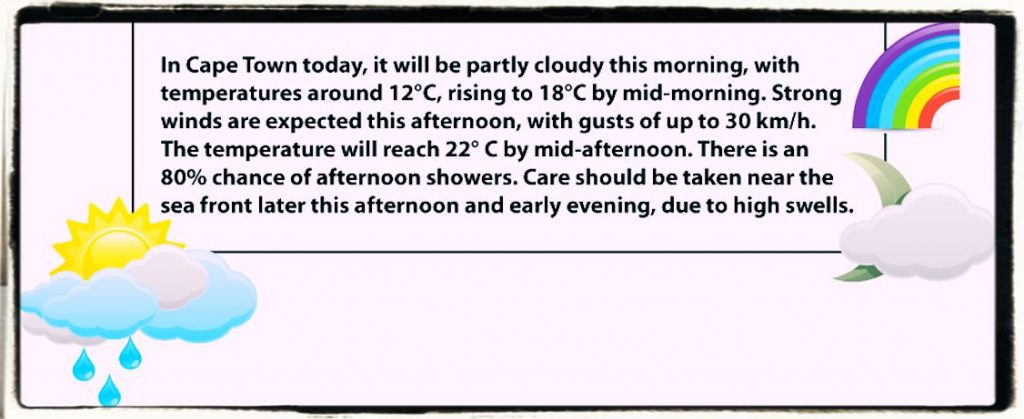
![]() Everyone complains about the weather, but nobody ever seems to do anything about it.
Everyone complains about the weather, but nobody ever seems to do anything about it.
Willard Scott
There is no such thing as bad weather, only different kinds of good weather.
John Ruskin
One can’t predict the weather more than a few days in advance.
Stephen Hawking
I’ve lived in good climate, and it bores the hell out of me. I like weather rather than climate.
John Steinbeck
We may achieve climate, but weather is thrust upon us.
O. Henry
Books have the same enemies as people: fire, humidity, animals, weather, and their own content.
Paul Valery

Metereology
What causes weather conditions. Weather conditions are caused by the sun energy. The sun heats up some parts of Earth more than others. Land heats up faster than water, setting up temperature differences between oceans and continents. This unequal heating creates variations in temperature and air pressure, winds, and ocean currents. Meteorology is the study of the changes in temperature, air pressure, humidity, and wind.
Precipitation
Precipitation is any form of water that falls to the Earth surface. Earth is a unique planet where all three forms of water (liquid, solid and gas) exist naturally.
Heating from the sun helps water evaporate from the oceans, condensate in clouds and precipitate in the form of dew, rain, snow, sleet, hail or frost. Precipitation does not fall in the same amounts throughout the world, in a country, or even in a city. The world record for the most rain in a year was recorded at Cherrapunji, India, where it rained 2,300 cm in 1861.
What happens to the precipitation when it reaches the Earth surface?
It can remain on the surface in the form of rivers or lakes. It can infiltrate in the soil. It can be taken up by the roots of trees. It can evaporate again.
The water cycle
The water cycle describes the existence and movement of water on, in, and above the Earth. Earth water is always in movement and is always changing states, from liquid to vapor to ice and back again. The water cycle has been working for billions of years and all life on Earth depends on it. The water cycle has no starting point. The sun heats water in the oceans. Some of it evaporates as vapor into the air. Rising air currents take the vapor up into the atmosphere. The vapor rises into the air where lower temperatures cause it to condense into clouds. Air currents move clouds around the globe, clouds collide, grow, and fall as precipitation. Some precipitation falls as snow and can accumulate as ice caps and glaciers, which can store frozen water for thousands of years. Most precipitation falls back into the oceans or onto land, where, due to gravity, the precipitation flows over the ground. A portion of surface water enters rivers that flow and move water to the oceans. Not all surface water (runoff) flows into rivers. Much of it infiltrate into the ground and fills aquifers.
Pressure
The wind blows because air has weight. Cold air weighs more than warm air, so the pressure of cold air is greater. When the sun warms the air, the air expands, gets lighter, and rises. Cooler, heavier air blows to where the warmer and lighter air was, or in other words, wind usually blows from areas of high air pressure to areas of low pressure. If the high pressure area is very close to the low pressure area, or if the pressure difference (or temperature difference) is very great, the wind can blow very fast. Although wind blows from areas of high pressure to areas of low pressure, it doesn’t blow in a straight line. That’s because the earth is rotating. In the northern hemisphere, the rotation of the earth causes winds to blow to the right; in the southern hemisphere winds blow to the left. This is called the coriolis force. So in the northern hemisphere, winds blow clockwise around an area of high pressure and counter-clockwise around low pressure.

How is the weather forecast?
A daily weather forecast involves the work of thousands of observers and meteorologists all over the world, and the work of thousands of machines.
Modern computers make forecasts very accurate and weather satellites take photographs of clouds from space.
Meteorologists use the observations from ground and space together with formulas and rules based on past experience. Some of the tools used by meteorologists are: a thermometer to measure temperature. A barometer to measure air pressure. A rain gauge to measure precipitation. An anemometer to measure wind speed. A weather balloon measures weather high in the atmosphere. A satellite orbiting Earth takes pictures of clouds from space to help us see where and how fast clouds are moving. A radar shoots a radio signal into a cloud to shows where precipitation is falling and how much. It can also spot severe storms and how fast they are moving. Eyes and ears are probably the most accurate tools. Meteorologists all over the world observe clouds and precipitation, and relay that information and their measurements to other meteorologists throughout the world so we can know how the weather is changing from place to place.
